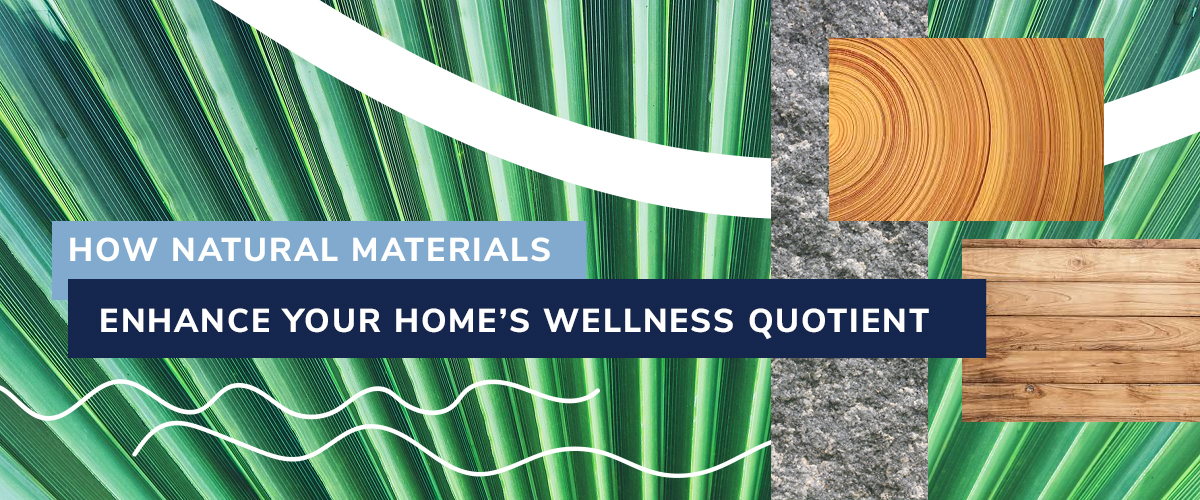Being environmentally conscious in no longer a hip and cool buzzword. It has become a movement that more people are consciously embracing. Going organic, eco-friendly, and local is not simply a fashionable trend anymore. This is being seen more and more in our choice of the basics: food, clothing, and shelter.
In construction, there has been an easy transition to using more natural materials. Naturally-available materials are eco-friendly and hence sustainable. They are locally available and thus have a lower or zero carbon footprint. As a result, they are also economically viable.
Furthermore, natural materials are also healthier for the environment and people. Wellness can be easily sought even in the materials used to construct one’s home.
Here are five popular natural materials used in the construction of homes:
Bamboo
Wood is one of the oldest materials used in constructing homes. However, in these ecologically-sensitive times, using wood is almost taboo. Bamboo, however, is the perfect, sustainable alternative to wood. As one of the fastest-growing plants in the world, bamboo regenerates faster than wood, thus making it more renewable and sustainable. Some bamboo varieties have the strength of steel, providing durability to the structures made from it. Simultaneously, bamboo is also lightweight and elastic, which makes it resistant to earthquakes and hurricanes. Boasting such diverse qualities, bamboo is one of the most favoured natural construction materials.
Mud
Mud is a natural and abundantly available raw material. It is a breathable material that offers excellent insulation and helps to maintain even temperatures inside the house. Thanks to this quality, there is less dependence on electrical means such as air conditioners and fans to cool a home. Mud is also very recyclable and thus sustainable; when broken down it goes back to nature. Besides being very economical to source, it hardly requires much transportation from source to site. This facet reduces the carbon footprint of a structure constructed using mud and raises its eco-friendliness.
Kota Stone
Originally from Kota, Rajasthan, kota stone is a fine-grained variety of limestone that is naturally available. A highly durable material, kota is used in constructing interiors as well as exteriors and blends easily into the overall decor. Its durable nature also means that it requires minimum maintenance. It is a highly resistant material that can withstand any weather condition: dry, humid, cold, or hot. Kota stone is also homogeneous, anti-slip, non-porous, and quite economical.
Lime Plaster
Composed of sand, lime, and water, lime plaster is one of the most breathable materials used in construction. The porous nature of lime plaster improves the ability of a building to absorb and release moisture, thus providing a more comfortable environment and reducing damage. Lime plaster is more durable than synthetic plasters. Known as one of the oldest materials used by man in construction, lime has stood the test of time. It also binds easily with other materials and is easily workable. Lime is also naturally available, thus making lime plaster an eco-friendly material. In addition to all these properties, lime plaster provides a beautiful finish to any wall or surface.
Natural Paints
We have been using natural paints across civilisations for thousands of years. They are made from naturally available ingredients such as clay, marble, lime, earth pigments, and chalk. Such paints are free of chemicals and volatile organic compounds (VOCs), which makes them safer and eco-friendly. Natural paints are a healthy choice especially in homes inhabited by children, pregnant women, and people with allergies or chemical sensitivities. In addition to being environment-friendly, they are also more breathable than other conventional paints, which trap moisture and eventually peel and crack.
Homes constructed using natural and locally-sourced materials makes them more sustainable, eco-friendly, and conducive to healthy living. Construction with natural materials is an easy choice for those conscious about living in homes with a low carbon footprint and living an environmentally-conscious lifestyle.








